



















Image resolution is best reviewed in “Preview” mode.
For more information about photography and usage rights, please review the Local Photography Guidance & Rules One-Sheet on InfoNet.

Become an AARP Massachusetts volunteer and be part of a powerful force for good, protecting the rights and well-being of people 50-plus and their families. Use your time and talent to write letters, advocate online or in person, participate in events, and meet with decision-makers.
This month, Social Security turns 89. In the fabric of society, few programs have woven themselves as deeply into the American culture as Social Security. The economic devastation of the Great Depression further exposed society’s vulnerabilities, with millions of older Americans in poverty and many more at risk of financial ruin. In response, the Social Security Act was signed into law to better ensure a measure of income security for older Americans in retirement.

Over the subsequent decades, it has matured into a vital source of guaranteed, inflation-adjusted income for millions of retirees who pay in and earn their Social Security through payroll taxes they and their employers contribute throughout their working lives. Social Security also enjoys widespread support across all ages and demographic groups.
Today, nearly 1.3 million Massachusetts residents receive Social Security. Most of those age 65 or older count on Social Security as their largest source of income, and about 25% of households rely on Social Security for 90% or more of their income.
With 90% of people saying Social Security is important to their retirement security, it is instructive to understand how it was created and how it has evolved over time.
Here’s a timeline of significant events in the history of Social Security.
Aug. 14, 1935: President Franklin Roosevelt signed the Social Security Act into law. Aug. 10, 1939: The program was broadened to include benefits for workers’ dependents and survivors.
October 1950: Congress authorized the first cost-of-living adjustment (COLA), an increase of 77 percent.
Giving back. Making friends. Changing lives. Volunteer opportunities with AARP—a nonprofit, nonpartisan organization—are open to people of all ages. Find your place at aarp.org/volunteerhere



September 1960: President Eisenhower signed a law amending the disability rules to permit payment of benefits to disabled workers of any age and to their dependents. June 30, 1961: All workers are now allowed to retire early at age 62, albeit at a reduced Social Security benefit. Previously, benefits could not be claimed until the normal retirement age (NRA) of 65.
Oct. 30, 1972: President Nixon signed the Social Security Amendments making the cost-of-living adjustment automatic each year,
April 20, 1983: President Ronald Reagan signed into law sweeping changes to Social Security aimed at addressing the imminent Social Security funding gap. These included moving up scheduled increases in the payroll taxes that fund Social Security, gradually raising the normal retirement age to 67, and making 50 percent of Social Security benefits taxable for recipients with incomes above $25,000 for an individual and $32,000 for married couples filing jointly.
Aug. 10, 1993: President Bill Clinton signed the Omnibus Budget Reconciliation Act, a large deficit reduction package of tax increases and spending cuts that included a provision raising the share of Social Security benefits subject to income tax from 50 percent to 85 percent for beneficiaries with incomes above $34,000 (single) or $44,000 (couple).
The QR code seen on this template must be deleted or changed. QR codes must be created in the Beaconstac platform using your AARP account. Download either .jpg or .png format for use in the template.
May 6, 2024: According to the Social Security Trustees report, Social Security can pay full benefits until 2035. That doesn’t mean Social Security payments would end, but they would be funded only by each year’s payroll tax revenue. The Trustees estimate that would cover about 83 percent of scheduled benefit payments.
The history of Social Security is a testament to the promise between the government and its citizens. From its humble beginnings during the Great Depression, Social Security has stood the test of time, having never missed a payment, providing a foundation of retirement security to generations of Americans.
For information about licenses, training and support, review the QR Code Guidance on InfoNet or contact BrandHelp@aarp.org.
By Maureen Sullivan ContriButing Writer
WESTBOROUGH – A hot and humid summer’s afternoon is not usually the best time to present a quilt.
However, when it comes to the Quilts of Valor program, any chance to honor local veterans is a good one, despite the weather.
On Tuesday, July 16, members of the Veterans Advisory Board (VAB) presented quilts to Daniel E. Brogie and Earl Wood.
Brogie, 90 years old, served in the Coast Guard, on board the USS Duane, during the Korean War.
Wood, 94 years old, is also a veteran of the Korean War; he served in the Air Force as a GCA radar operator, helping to land aircraft. His tour of duty included stops in the Aleutian Islands and northern Maine.
According to Andy Toorock of the VAB, more than 100 veterans from Westborough have been awarded a quilt.
In addition to the quilts, each veteran was presented with a certificate from the Quilts of Valor Foundation.
About the program
The foundation was founded in 2003 by Catherine Roberts, whose son was deployed in Iraq. In a dream, she saw a young man sitting on the side of his bed, in utter despair. Then she saw him wrapped in a quilt, and his demeanor changed to one of hope and well-being.
Roberts used this message of quilts equals healing to begin making quilts.
As of 2024, nearly 400,000 quilts have been awarded to service personnel veterans nationwide. These quilts are hand made by volunteers, with unique patterns in red, white and blue.
For information on the Quilts of Valor program, including how to get involved and to donate, visit https://www.qovf.org/.

Daniel E. Brogie, center, is presented a Quilt of Valor from members of the Westborough Veterans Advisory Board on Tuesday, July 16, in Brogie’s home.

Hearing aids are medical devices. They should be fitted by a professional to ensure optimal hearing.
• We are very experienced licensed audiologists who have been in business for 37 years. We actually care about you hearing better.
• Before you purchase hearing aids online, over the counter, from a big box store, or a TV ad, give us a call and make an appointment for a CONSULTATION.
• You may just discover you can get hearing care, AND hearing aids from LOCAL professionals for reasonable or the same pricing
• Give us a call at one of our three locations before you commit.






“When you can’t hear, we listen.”

By DeBorah Burke henDerSon ContriButing Writer
BOSTON – Some people call State Treasurer Deb Goldberg “The Godmother” for her uncanny knack of knowing a lot about so many things, but that depth of knowledge does not come easily. Following in her father’s footsteps, and functioning as the CEO of disparate agencies, she is the strategy person, and the one with final say on policy. She said she is typically working and answering emails in response to the day’s issues until two o’clock each morning.
“I love learning and I love challenges,” Goldberg remarked. “I love my job because I know I am making a difference in people’s lives. Isn’t that what being in public service is all about?”
Family influence
Family influence and strong core values come naturally. Sidney Rabb, Goldberg’s grandfather, served during two Roosevelt administrations. Avram Goldberg, her father and political

mentor, held office in Brookline. Goldberg’s maternal great-great-grandmother, Yente, immigrated to the United States, and after arriving in the

North End, opened a small retail store. Each friend and relative who joined was given a job and a roof over their heads. It was through that store the families learned about the food business, and from those roots grew Stop & Shop. Goldberg’s mother, Carol, served as President and Chief Operating Officer and with her husband, Avram, Chairman of the Board and Chief Executive Officer, grew Stop & Shop to a four-billion-dollar business.
Goldberg learned from an early age that one could run a successful business while providing for family and community. Encouraged to engage in local campaigns, at age seven Goldberg was mascot for the Mike Dukakis state rep campaign. At 10, she helped her father by answering telephones and delegating rides to the polls when he was running for office.
“I didn’t know kids normally wouldn’t do those things,” Goldberg stated. “I used to read all the materials on Dad’s desk and answered the calls on his separate business line.”
Prior to her career in public service, Goldberg worked in retail operations, buying, and consumer affairs at The Stop & Shop Companies, Inc. In 1988, following an unwelcome takeover of the business, Goldberg diverted her attention and energy elsewhere. She first ran for Brookline town meeting and won, and then one year later became a selectman in a very competitive race.
Goldberg served on the board of selectmen in Brookline for six years, including two years as its chair, came close to winning the 2006 race for lieutenant governor, and was active in the
“Part of my commitment to continuing in this role is to see things through and make sure they stick,” says Deb Goldberg, now in her third term as state treasurer. (Photos/ Submitted)

With 800 employees, Deb Goldberg says she runs the state treasury like a CEO managing a multi-faceted operation.
2008 Hillary Clinton presidential campaign. When former state treasurer Steve Grossman decided against running for reelection, political leaders approached Goldberg to run for the office.
“I needed to review all the departments to see if I had the expertise to take this role on,” Goldberg added, and she did just that.
Her years in the family business at Stop & Shop and tenure on the Brookline board which, for example, is the licensing authority for alcohol, gave her ample understanding of the alcohol beverage and licensing business for which she would have oversight. She likened the State Lottery to operations at Stop & Shop and running successful marketing campaigns. As a graduate of Boston University, Boston College Law School, and Harvard Business School, Goldberg would bring strong legal and financial expertise to the post.
Since taking office in January 2015, Goldberg continues to redefine the role of treasurer. Drawing upon her expertise and experience in both the public and private sectors, she has promoted fiscal policies and programs to ensure opportunity for all. She said her desire
to bring commonsense business principles to benefit the public good stems from lessons learned her entire life.
With 800 employees, Goldberg said she runs the state treasury like a CEO managing a multi-faceted operation. She depends on deputy treasurers, department heads, chief of staff, and deputy chief of staff, walks into every meeting prepped with full knowledge of the issues to be addressed, and helps focus her teams’ efforts on being innovative and cutting-edge.
“In every area of the treasury, my team and I strive to ensure economic stability, economic security, and economic opportunity for every Massachusetts resident,” she explained.
In Goldberg’s current legislative agenda her proposals, prepared and filed in collaboration with legislative partners, focus on promoting responsible gun policy, protecting and enhancing Massachusetts’ strong financial standing, championing policies that address long-term economic needs of working families and retirees, and advocating for equitable access to capital. Additionally, these proposals seek to streamline various aspects of treasury operations to improve its ability to deliver for Massachusetts residents.
In her role as the State Treasurer and Receiver General, Goldberg is responsible for the state’s cash and debt management and unclaimed property. She also chairs state boards and commissions, including the Massachusetts School Building Authority, the Pension Reserves Investment Management Board, the State Board of Retirement, the Massachusetts State Lottery Commission, and the Massachusetts Clean Water Trust.
Almost immediately after taking office, she established the new Office of Economic Empowerment (OEE), the first of its kind in the country, and chairs its Economic Empowerment Trust Fund. The OEE is tasked with supporting, advocating, and facilitating policies that empower all Massachusetts residents. Its priorities include closing the wage gap, increasing access to financial education, improving college affordability, and investing in STEM careers and education.
Treasurer Goldberg is the former President of the National Association of State Treasurers and is Chair of the National Institute of Public Finance.
In addition to the complexities of growing the state’s cash reserves, managing debt, saving the state money, and interacting with rating agencies, the Treasury team helps protect seniors against targeted fraud and scams by working with state police departments in providing educational programs. The Clean Water Trust ensures the testing of water, supplying of clean water, and helping communities
build new water systems, providing safe drinking water for all. The Lottery generates more than a billion dollars annually, and Goldberg is proud to note these funds are distributed to each city and town in the Commonwealth to use where most needed.
The Baby Steps Savings Plan is the first seeded savings plan for college or vocational training for babies born or adopted in the state and now, nearly 23,000 children and their families are saving for their future. The Veterans Bonus Division is the national leader in the country in taking care of returning service members and their families and financially recognizing their acts of bravery.
Last year, the Treasury processed over 145,000 claims and returned $185 million in unclaimed property to its rightful owners.
“Did you know there is $3.4 billion in unclaimed property here in Massachusetts? One in 10 people in this state are owed money and one of them could be you,” Goldberg stated. “So, check the list, go online, or call our office to search for your name and begin the process today.”
Treasurer Goldberg urges all citizens to check the comprehensive list for all amounts at www.findmassmoney. gov or call the live call center at 1-888344-MASS (6277).
Following in her Yente’s formidable footprints in caring for community, Treasurer Goldberg is the president emeritus of Adoptions with Love, a member of the Greater Boston Food Bank Advisory Board, a founder of Berkshire Hills Music Academy — a school for individuals with intellectual disabilities — a trustee emeritus at Beth Israel Lahey Health, and a former director at Affiliated Physicians Group/ Beth Israel Deaconess HealthCare. Her philanthropic work includes associations with The Miriam Fund, the 100 Club, United Way, and the Combined Jewish Philanthropies.
In 2016, she received the Excellence in Leadership Award from The Jewish Community Relations Council of Greater Boston (JCRC). In 2022, Goldberg received the Northeast Women in Public Finance Freda Johnson Award for trailblazing women and in 2023 the Women in Public Finance Lifetime Achievement Award. She also received the 2023 Lifetime Achievement Award from the Boston Arts Academy, Boston’s only public arts high school, honoring her deep-rooted connection to the arts.
Now in her third term, Goldberg is the first Jewish woman elected to statewide office in Massachusetts.
“Part of my commitment to continuing in this role is to see things through and make sure they stick,” said Goldberg. “I want to ensure continuity in serving the people of the Commonwealth.”

1. How did you make the decision to move your mom to the Willows? (Erin)
Mom had started to have a couple of health and mobility issues that grounded her... we knew that driving was going to be tricky so, while she was in respite, we began looking.
2. Was location key to your selection of the Willows? (Erin) Yes, we love New England. Mom said to me, “Erin, where are we going to go to make our memories? We have always loved the Boston area... she said to me, “Let’s go home so we can spend this chapter doing the things we both love”
3. Were you surprised to learn about all the choices you would face? (Erin)
There’s no handbook for how to help a parent with this transition. We wanted to find a place that would help her handle all of the changes that come with aging. Whatever the next phase is, the goal is to age in place for as long as you can in the quality and the surroundings you love
4. What makes you feel at home at the Willows? (Ginger) It’s so clean here. This place has character. It’s not all new and chrome. This is my kind of place. I’ve met a lot of nice people. It fits us and we fit it... and the staff is so accommodating and so quick to respond.
5. What lesson did you learn about selecting a senior living facility? (Ginger)
Had I been thinking about it, maybe I would’ve looked into it in my 60’s, not that I was ready for it at all, but for me to do the work to come to a place like the Willows. To say ‘all right,’ what am I looking at when I’m 80? Start looking at these places, just start to prepare. It’s important to know what your options are.
Your best life starts here. Because here, you’re family.
senior living

By evan WalSh ContriButing Writer
SHREWSBURY – A local historian is sharing stories about Shrewsbury legend Anthony “Spag” Borgatti.
In his new 84-page book, “Spag - His Life and Legacy,” lifelong Shrewsbury resident and Town Historian Michael Perna Jr. recounts Spag’s life with anecdotes, recollections from community members who knew him and stories about his famous superstore that gave countless people reason to visit the town.
“I started a couple years ago when one of [Borgatti’s] daughters passed away. The other daughter had me come over to her house. It was full of Spag’s photos and plaques and stuff like that. She said that anything I wanted to take a copy of, take a photo of — feel free… That kind of planted the seed. The more people I talked to, there’s so much more to know,” Perna said.
“Spag – His Life and Legacy” marks Perna’s seventh book on Shrewsbury’s history.
A 1968 graduate of Shrewsbury High School, Perna is involved with the Shrewsbury Historical Society and has published over 1,000 articles in the Shrewsbury Chronicle, Community Advocate and Fifty Plus Advocate. His writings include “Shrewsbury in the Civil War” (1986), “Remembering Lake Quinsigamond – From Steamboats to White City” (1998), “Shrewsbury” (2001) and “Shrewsbury Through Time” (2014).
“Even as a kid, I’ve always liked history. It started with military history, Civil War history, and then

Colony Retirement Home III is congregate housing for seniors. Enjoy nutritious “Home Cooked Meals,” served in our attractive dining room with your neighbors and friends.
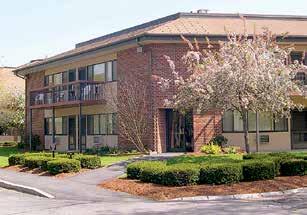
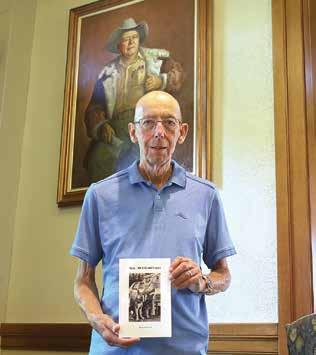
I thought, ‘What was Shrewsbury’s role in the Civil War?’ So that kind of morphed into Shrewsbury history,” said Perna.
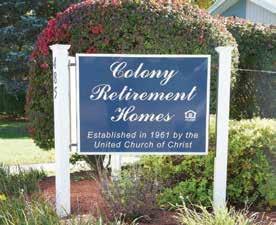
Perna spoke to several people who knew or worked for Spag and combed through archives to research the book. Despite living in Shrewsbury for his entire life, Perna frequently came across new stories about Spag’s generosity and kindness, especially when people needed it the most.
In one instance, Perna writes that Spag and his wife, Olive Borgatti, who helped him run the business, opened the store to three young children who had just lost their father who was a firefighter in an accident. The kids were allowed to grab whatever they wanted off the shelves, and they left with a trunk full of toys.
“They were amazing people. So caring, with such dedication to employees,” said former Spag’s employee and Perna’s wife, Sandra.
Perna said that by sharing stories about perhaps Shrewsbury’s most influential resident, his memory will be kept alive.
“My thought is that anybody in their forties and older, they remember going to Spag’s. The younger generation does not. This will preserve that for them: the memories and experiences,” Perna said as he walked to a portrait of Spag at Shrewsbury Public Library.
“I enjoy doing [research]. I keep finding more and more things. People seem to enjoy it.”
The book is available at Papa’s Hardware on Route 9 in Shrewsbury, at Tatnuck Booksellers, Barnes & Noble, the Paper Store and Amazon.


Call Monday thru Friday, 9am to 5 pm for more

By Sharon oliver ContriButing Writer
BOSTON – Rex Trailer is, without a doubt, one of the most beloved figures from Boston kids TV shows from days gone by. Dressed in a cowboy outfit and guitar in hand, Trailer hosted “Boomtown” on WBZ-TV Channel 4. He and his succession of sidekicks entertained local children on Saturday and Sunday mornings from 1956 to 1974 and it was an instant success.
The Texas native originally hosted a children’s series in Philadelphia for Westinghouse but was soon given a choice to work at two other Westinghouse stations: Boston or Cleveland. He chose Boston and on April 28, 1956, the new morning program “Boomtown” was established. The show also established Rex Trailer as a local celebrity. The television personality was a real cowboy and recording artist who often displayed his skill with trick roping, horse-riding tricks, handling a bullwhip, and shooting. However, he did stop using weapons on the show after Robert F. Kennedy’s assassination in 1968.
Every episode of “Boomtown” opened the live show with Trailer in a pre-recorded bunkhouse setting, singing or performing a slapstick comedy routine alongside a sidekick, with the first being Dick Kilbride as Pablo. After Kilbride died, he was replaced with Terrence Currier who played the bewhiskered Cactus Pete from 1967 to 1969. Bill O’Brien came along as cavalry soldier Sgt. Billy. Trailer warmly greet-

Rex used TV to create awareness and included kids with disabilities as part of the audience.
Michael Bavaro
ed his young fans with, “Howdy Folks,” to which they replied, “Howdy Rex!”
A taste of the Old West
Aside from enjoying the cartoons or watching Trailer ride his horse, Goldrush, into town from the bunkhouse to the old western town of Boom-

town, with its hitching posts, an opera house, storefronts, and jail, kids also loved the theme song, a song that is said to have been “as sticky as the molasses used for grandma’s cookies on the old frontier.”
Another appealing part of the show was the “wanted man” segment
where two kids got to be appointed as “sheriff” and “deputy,” shown a wanted poster of a thinly disguised studio audience member and assigned to pick out the “wanted” child marching amongst the other children (or posse) who paraded through the sheriff’s office. This was a wonderful way to give every youngster a chance to be seen on the screen as they waved toward the camera to family and friends watching. An estimated 200,000 kids appeared on “Boomtown” during its run and approximately four million watched by television or saw Trailer at one of his many appearances across New England.
Disability awareness
“Boomtown” was one of the first shows to prominently feature mentally and physically disabled children in the audience, a conscious decision made by Trailer. He even led a wagon trail across the state to raise awareness about children with disabilities in 1961.
Michael Bavaro, Trailer’s manager, told the Worcester Telegram & Gazette in 2011, “Back in the 1950s, all that stuff was kept behind closed doors and people were put in institutions. Rex used TV to create awareness and included kids with disabilities as part of the audience. He said, ‘Come on and mingle in with the rest of the kids.’”
Rex Trailer was inducted into the Massachusetts Country Music Hall of Fame in 2000 and into the Massachusetts Broadcasters Hall of Fame in 2007. He died in 2013 while visiting family in Florida for the holidays. He was 84.
By Colin MCCanDleSS ContriButing Writer
CAMBRIDGE – Located in the heart of Harvard Square in Cambridge, the legendary folk music venue Club Passim has been a mainstay of the New England arts community, hosting shows for more than 60 years and counting.
Established as Club 47 in 1958, Club Passim has existed as several different entities over the decades. Its original location was at 47 Mount Auburn St., where it first opened as a restaurant and jazz venue.
Shift to folk music
In what must be one of the more bizarre laws ever recorded on the books, the police initially closed Club 47 because it was illegal to have more than three stringed instruments in a restaurant while also serving drinks. To comply with the law, it reopened as a private club requiring a membership fee, explained Club Passim managing director Matt Smith, who has worked there since 1995. Smith started as a
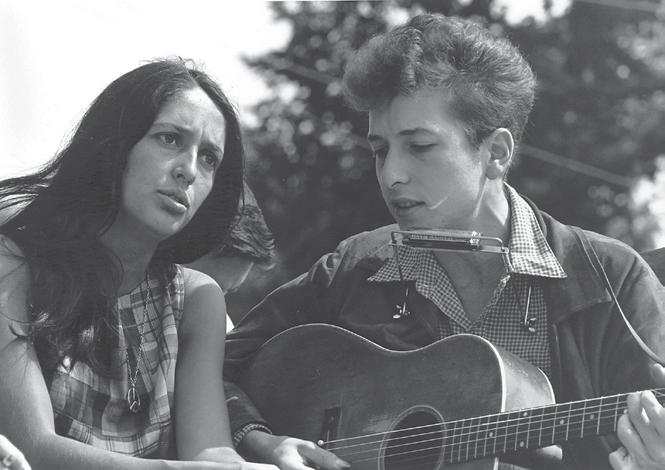
volunteer and later worked as performance manager, club manager and assistant manager before assuming his current role as managing director.
The focus then shifted to folk music. Performers who played there in the early days include luminaries who were then just starting their profes-
❖ Estate Planning
❖ Elder Law
❖ Long Term Care Planning
❖ Masshealth Applications
❖ Corporate & Business Planning
❖ Real Estate
❖ Powers of Attorney
❖ Guardian/Conservator Issues

Josephine L. Veglia, Esq.
ATTORNEYS AT LAW
2 Jackson Ct. | Oxford, MA 01540 | 508-987-3981 | Fax 508-987-1317 www.durbinandveglia.com
(Photo/Wikimedia Commons/Rowland Scherman)
Singer-songwriter Tracy Chapman, a Tufts University student who started playing on the streets of Harvard Square and on Red Line subway platforms, appeared at Club Passim as her career was taking shape in the 1980s.
(Photo/Courtesy of Club Passim)

sional careers such as Joan Baez and Bob Dylan. Artists like Ramblin’ Jack Elliot and Judy Collins were also part of that vibrant American folk music scene who graced the stage at Club 47 during its formative years. As a local living in Boston at the time, Baez played the club regularly. While Dylan participated in hootenannies and open mic sessions, he never played an actual billed concert there, according to Smith.
The club moved to its current location, 47 Palmer St., in fall 1963. It closed in 1968 and later reopened as Passim in 1969. Although it was a café and card shop, because of Club 47’s iconic status as a folk music venue, people often stopped in and asked what happened to the music, said Smith.
The new owners, Bob Donlin and his wife Rae Ann, were beat poets who were friends with pioneering creatives of the Beat Generation such as the novelist and poet Jack Kerouac. “So he had
sort of an artistic bent to him,” said Smith. It wasn’t long before patrons convinced him to expand into offering live music and ultimately folk tunes and the singer-songwriter returned as a staple to Passim.
Rebirth in 1990s
The venue then closed again in 1994, at a time when folk music was experiencing a decline in popularity, noted Smith. Yet by this point the club was well-known and had supported countless amazing artists throughout its history who had gone on to achieve fame and fortune. In the 1970s, Passim hosted musicians like Tom Waits, Jackson Browne and Stevie Nicks before she joined Fleetwood Mac. Grammy award-winning singer-songwriter Tracy Chapman played there in the 1980s. An independent record label named Rounder Records (that was based in Cambridge at the time) stepped in to
save Passim, putting up an interest-free loan to pay off the establishment’s debts and help incorporate it as a nonprofit. It reopened once again in 1995, this time as Club Passim.
In more recent years, Passim has featured artists like Josh Ritter and Regina Spektor.
Smith said that the raison d’etre of Passim and its concert space is to serve as an incubator. “It’s a place where people start to learn their craft.” The tiny, intimate venue only has a capacity of 110 seats. “The seating goes right up to the stage,” related Smith. “There’s not distance between the performer and the audience.”
He added that Passim is intended as a listening room that is not for idle conversation. “It’s almost like a small theater,” Smith elaborated. “People aren’t coming to the concert and standing and talking to each other the whole time. You’re there for the show. And the artist is driving the bus. And you’re along for the ride. They’re (the audience) part of the show.”
Although most associated with folk music, Smith qualified of Passim, “It’s that and a lot more. It’s more about the way we present music as opposed to the specific genre that’s on stage.”
A diversity of genres today
Today, the all-ages club showcases music covering a broad range
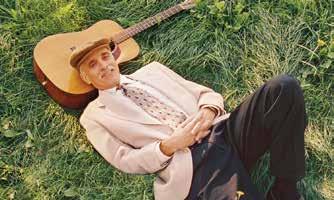
of musical genres including Americana, bluegrass, blues, Celtic, country, folk, jazz, klezmer, old-time, pop/rock, singer-songwriter, a cappella, hip hop, world music and more.
“It’s all kinds of genres,” remarked Smith. “But it’s more about the kind of space and the interaction you have.”
The Noise Magazine once described the experience of catching a show at Passim this way: “Seeing live music in Passim is similar to having a band in your own living room: the throbbing beat surrounds the cryptlike club and makes the performance seem almost interactive between the group/audience. The feeling is so intense that the listener is swept up in the atmosphere and becomes part of the event.”
Remarkably, some artists have continuously played at Passim since the 1960s. “Because it is that place that
•
Jim Kweskin, now 84, has been playing at Club Passim since he formed the Jim Kweskin Jug Band in the 1960s. (Photo/Courtesy of Club Passim)
is part of their origin story,” mused Smith. One example is Jim Kweskin, 84, a folk musician best known for forming the Jim Kweskin Jug Band in the early 1960s. He first began performing at Passim when he was in his 20s. Kweskin has kept up with music his entire life and released a new album in January.
Passim hosts festivals such as BCM Fest, a Celtic music festival held in January, as well as a bluegrass festival in April. This year will also mark the 26th year of its Campfire Festival, presented on both Memorial Day and Labor Day weekends. Smith described this sonic sampler as an “all-you-can-eat buffet of music over four days.”
As a nonprofit, part of Passim’s mission is to create and encourage a vibrant music community, and in 1999
Now accepting Applications for 62 years of age and older and those that are under 62 years of age and are permanently disabled.


they established a School of Music that offers classes. It mostly consists of group classes typically arranged in ensembles with varied styles or genres during which people of all different instruments perform together.
Additionally, it offers various grant programs. Passim developed its first grant initiative, the Iguana Music Fund, in 2008. Since then it has gone on to establish other grant projects including the Gecko Fund and the Brian O’Donovan Legacy Fund, named after the late Celtic radio personality and presenter to honor the contributions he made to Passim and Boston’s Celtic music community. During the COVID-19 pandemic, it launched a grant program called the PEAR (Passim Emergency Artist Relief) Fund to raise money to provide financial assistance to out of work musicians.
As a nonprofit club, it offers memberships with annual dues at varying levels depending on affordability. Members receive discounts, early tickets to upcoming concerts and opportunities to attend free member events.
“They become a really big part of what keeps this engine running and are a big part of the way artists get their start. So they’re kind of boosters for the arts,” asserted Smith.
To check out upcoming shows and festivals or to donate or buy a membership, visit passim.org.


By Sharon oliver ContriButing Writer
HYANNIS – They may not have invented the kettle chip, but Cape Cod Chips founders Steve Bernard and his brother Jude certainly helped in bringing a delicious, crunchy style of potato chip into prominence. Born in 1947, Steve Bernard graduated from the University of Notre Dame with a degree in economics. A restless adventurer, he and a friend spent the decade following his graduation crossing the country by hitchhiking, fighting forest fires and working on a boat in Alaska, installing car sunroofs, sailing to the Caribbean, working with chickens and catching tuna.
A healthier process
Not long after tasting a natural potato chip from a company based in Hawaii, Steve sold his auto parts business in 1980 in lieu of starting a potato chip business using a healthier process. With no real experience except for a week-long course on potato chip making at Martin’s Potato Chips in Thomasville, Pennsylvania, Steve Bernard launched Cape Cod

Potato Chips in 1980 in Hyannis. He purchased an 800-square foot storefront in a prime tourist attraction area and bought an industrial potato slicer for $3,000.
Instead of dumping potato slices in a tub of oil to travel on a conveyor belt, his Cape Cod chips were cooked in batches in kettles, fried in a shal-
low vat of oil while stirred with a rake, resulting in a flavorful chip with a hearty crunch and containing less than 40% of the fat found in other brands of potato chips.
In pop culture Potato chips have been a favorite snack for generations and generations. Notably, the Cape Cod brand has proven to be among a favorite with many, earning some wide visibility. Its familiar white packaging with a drawing of the Nauset lighthouse in Eastham makes it stand out on store shelves and evokes memories of Cape vacations. In 1999 on Episode 21, Season 6 (“The One Where Ross Nauset Light in Eastham is prominently featured on the packaging of Cape Cod Chips, a much-loved snack food created in Massachusetts. (Photo/Wikipedia –Peter

Within the building amenities include:
• A Theater-like media center
• Handicap-accessible lounges on every floor
• Library equipped with two computers and free internet access
• Physical fitness center
• Game room with billiard table
• Community room with bingo board and large screen TV
27 Mount Vernon Street, Worcester, MA
• O ffice O pen D aily 8:00 am - 4:30 pm
To receive an application please call 508-755-6062 TDD# 508-755-0228
Now accepting applications for 62 years of age and older and those who are under 62 years of age and are permanently disabled.
Applicants must meet HUD annual low income guidelines. Preference is given to individuals 62 and older.
• Contemporary styled 1 & 2 bedroom apartments
• New kitchens with built-in microwaves and granite-like countertops
• Small pets welcome
• Heat and Hot water included
• Bus route / ample parking
• Beautiful landscaped grounds with gazebo





Meets Elizabeth’s Dad”) of the hit sitcom “Friends,” Phoebe Buffay-Hannigan (Lisa Kudrow) is seen eating a bag of Cape Cod Chips’ white-cheddar popcorn.
Japanese jazz pianist Hiromi Uehara recorded a composition titled “Cape Cod Chips” on her 2009 solo piano album “Place to Be.” In 2012 Cape Cod Potato Chips premiered a television commercial featuring a band of computer-generated seagulls performing A Flock of Seagulls’ 1982 hit “I Ran So Far Away.” It was the company’s first commercial made for television. On rapper Lil Wayne’s mixtape “Sorry 4 the wait 2” in the song “No Haters,” Cape Cod Chips are referenced in the lyrics “Pockets lookin’ like the Blob, chips like Cape Cod.”
Anheuser-Busch acquired the company in 1985 but Bernard bought the company and its factory back from Anheuser-Busch after the beverage giant decided to shut down its snack food operations. Lance Inc., a snack food company, bought it from Bernard in 1999. In 2010, Lance Inc. merged with Snyder’s of Hanover


and Campbell Soup Company would eventually acquire Snyder’s of Hanover in December 2017.
Later ventures
Bernard opened a sandwich shop and made croutons from leftover bread which led to the creation of Chatham Village Foods. He later sold the company to T. Marzetti Company. After his daughter Nicole Dawes lured him out of his attempt at retirement, the two co-founded Late July Organic Snacks which produced organic cookies and crackers in 2001. Dawes once said it had been her dream since she was little girl to collaborate with her father. In 2020, Cape Cod Potato Chips celebrated its 40th anniversary by donating $40,000 to the Cape & Islands United Way (CIUW) organization’s Food Security efforts.
A resident of Marstons Mills and Sanibel, Florida, Bernard passed away at age 61 in 2009 following a battle with pancreatic cancer. He was survived by his wife Lynn, daughter Nicole, two grandchildren, one sister and three brothers including Jude Bernard.

A reverse mortgage gives qualified borrowers, 62 years old or older, the option to receive cash as a lump sum, a monthly check for life, and/or a line of credit that grows every month with NO required monthly principal & interest mortgage payments. All guaranteed by the federal government. You are, of course, responsible for your real estate taxes, insurance, and meeting other loan guidelines.
By not having a monthly mortgage payment, hundreds of thousands of eligible homeowners have utilized a reverse mortgage to:
• Receive tax free monthly cash for life
• Pay off a current mortgage or home equity line
• Payoff credit card debt
• Pay real estate taxes & property insurance
• Complete desired home repairs
• Finalize divorce situations or other legal matters
• Only one spouse needs to be 62 years old
• Gain peace of mind knowing that cash is available if ever needed
• And the list goes on!
NO monthly payment is required
You continue to own your home
Only one person needs to be at least 62 years old Easier to qualify for than a conventional loan You may receive cash when needed There is no cost to learn!
A reverse mortgage might not be the magic wand to solve every life challenge, but it very well could be the next best thing. Take the first step and get informed. I have helped hundreds of people and would enjoy the opportunity of having that conversation with you over the phone or in person.
A great place to start is get your free “How to Use Your Home to Stay at Home” 36-page book.




Trust Our Family With Your Family
Are you or a loved one in need of top-quality home care services?


This is the official reverse mortgage consumer booklet approved by the U.S. Department of Housing & Urban Development and published by the National Council on Aging.
To receive your free copy, please call or text me at (781) 724-6221 or email me at av@powhse.com
• Locally owned and managed – fully insured and bonded
• Client satisfaction and service are our top priorities!
Contact us today to see how we can help!
info@trustedlikefamilyhomecare.com • 508-579-1890
www.trustedlikefamilyhomecare.com and disabled adults in Worcester County
Alain Valles Reverse Mortgage Specialist 781-724-6221
I am also available to evaluate your specific situation, answer your questions, and calculate how much money is available to you.
Alain Valles was the first designated Certified Reverse Mortgage Professional in New England. He obtained a Master of Science from the M.I.T. Center for Real Estate, an MBA from the Wharton School, and graduated summa cum laude from UMass Amherst. He is the senior reverse mortgage loan officer MLO#7946 at Powerhouse Funding Corp. NMLS #1740551. He can arrange but does not make loans. Alain can be reached directly at (781) 724-6221 or by email at av@powhse.com
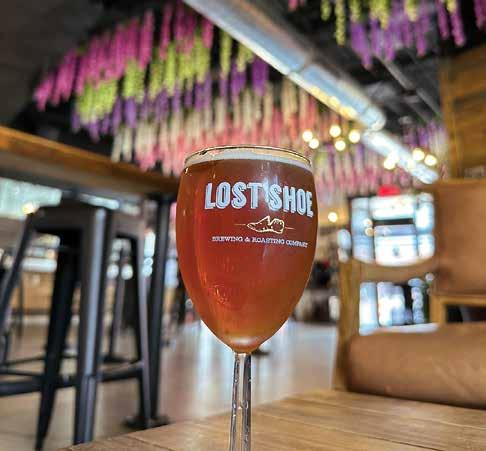

By SanDi Barrett ContriButing Writer
REGION – The craft beer explosion is taking over the bar scene across the country. Warehouse breweries, summer beer gardens, and satellite brewpubs are popping up everywhere in central Massachusetts. Exploring unique craft beers in your own backyard has never been easier.
Altruist Brewing Company, Sturbridge
Altruist Brewing overlooks the Quinebaug River in the old mill complex. On a beautiful summer night, the outdoor spaces are filled with happy guests enjoying their citrusy New England IPA H8zed & Confewzed or their rich, Bourbon Barrel-aged Stout, Just Deviate.
Bites: A menu of pub favorites is available and guests are welcome to BYOF (Bring Your Own Food).
Greater Good Imperial Brewing Company, Worcester Located near Goldstar Boulevard,
Greater Good offers guests a unique beer experience. The imperial beer style produces a “big beer” both in terms of bold flavors and a higher ABV (alcohol by volume). Expect flavors that will wow you. Sip their Imperial Hazy New England IPA, Pulp Daddy, or the seasonal Gigantic Gingerbread, an Imperial Gingerbread Ale and you will taste the boldness.
Bites: Their menu has a variety of tacos, burgers, salads, and a decadent FudGGy Brownie.
Lookout Farm Brewing & Cider Company, South Natick
Since 1651 Lookout Farm has been a working farm. Today, you can still enjoy the farm experience with pickyour-own events and cider donuts, but the real draw is the beer and hard cider. The beautiful outdoor seating is enhanced by a summer concert series where you can sip and dine under the stars.
Bites: The taproom offers interesting sandwiches and other bites plus a Saturday and Sunday brunch.


Lost Shoe Brewing and Roasting Company, Marlborough
Lost Shoe, a reference to Marlborough’s industrial past as a center for shoe manufacturing, is a charming cafe/taproom that offers beverages morning, noon, and night. Interesting craft beers like the Speciale Belge, This Could Have Been an Email, with notes of caramel and a banana bread finish, stretch your beer repertoire in a fun direction. Their 2022 US Open Beer Championship Gold Medal märzen, Main Street March, is a delightfully drinkable amber lager.
Bites: Lost Shoe offers a nibbles menu and welcomes guests to enjoy delivery or take out from local restaurants.
Moon Hill Brewing, Gardner
Sour beer fans (yes, it’s intentional) will enjoy this unique concoction, Candy Mountain, Charlie! The fruity flavors rotate offering something new

Lookout Farm Brewing & Cider Company in South Natick offers a variety of its own beers and hard ciders at one of the oldest continuously operated farms in the United States.
up!
You’re not the only one who’s made mistakes but they’re the only thing that you can truly call your own.
~ Billy Joel
By Marianne Delorey, Ph.D.
and tasty seasonally. True IPA fans will enjoy the bitter notes of their English Facelift IPA. Bring on the hops!
Bites: Moon Hill Brewing offers a full restaurant menu, everything from pub grub to plated entrees.
Night Shift Brewing, Natick
In conjunction with Level99, a social gaming playground, Night Shift Brewing has opened a taproom, kitchen, and beer hall adjoining the gaming space. Offering the same great draft beers as their Everett taproom, guests can enjoy their American Lager, Night Shift Light Lime, to stay in top gaming form. Alternatively, the Night Shift Whirlpool, is a refreshing New England Pale Ale for the win.
Bites: Detroit style pizza, Wagyu burgers, and assorted other nibbles grace the elevated pub grub menu.
Start Line Brewing Company, Hopkinton
When you enter Start Line’s spacious taproom, the charming decor pairs perfectly with a fabulous beer. But venture further to the large back patio area to enjoy your Hop Loaded Mosaic IPA. Their Hazelnut Cold Brew Coffee Stout is the perfect blend between coffee and dark beer.
Bites: Start Line offers a menu of BBQ, sandwiches, and burgers; everything you want to enjoy with a great beer, including one of Olivia’s Whoopie Pies.
IPAs, porters, lagers, and other beer styles sport more than just cute names on a can; they are liquid gold nurtured by artisan brewers who love their craft. Taste testing these unique brews will lead you to what may become your favorite local gathering spot.
A long time ago, I worked closely with an older resident named Lucille whose dementia was severe and fairly all encompassing. She couldn’t do much for herself anymore. She even struggled to eat, forgetting to swallow what she was chewing. At one point, I was doing a postcard campaign with some more able residents and put a pen and postcard in front of her so she would feel like she was part of the group. She copied down exactly what I read aloud and to my surprise, she seemed to enjoy the task. I went over to her to see how she was doing and was delighted to see that her spelling was great and her penmanship was beautiful. Her penmanship, combined with her ability to follow directions and her genuine joy at being involved, led me to an idea.
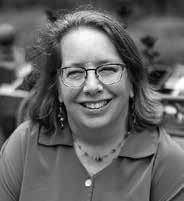
Lucille had a brother, Bill, who lived far away. Her brother wrote to her very regularly, and Lucille would hold onto these letters and read them repeatedly. In my years working with Lucille, I’m not sure I ever saw her write back, but perhaps it was because she did not have the opportunity.
I got out some paper and a pen and suggested she write to Bill. She needed a great deal of help coming up with what to say, but again, she was engaged and present in her world. I found a stamp and copied the return address from one of the many letters she had received. Her brother was elated! He knew on some level that the words he read were not Lucille’s, but he was still over the moon to see her writing and to read the letter in her voice.
I think of Lucille when I think about the Restaurant of Mistaken Orders — a dementia friendly pop-up restaurant in Japan. At this restaurant, all the waitstaff have some level of dementia. The customers understand that they may not get what they ordered, and the customers accept that. The waitstaff may sit down with them instead of getting them drinks. And they may be served their tea with a straw.
The restaurant exists to tap into the abilities the staff with dementia can still do and to give them meaningful interactions with people. The point is also to create an opportunity to expose customers to older adults with dementia. The restaurant is filled with happiness, kindness, and laughter, sometimes at mistakes, but also at the shared humanity.
There are some who believe this model offers people the opportunity to laugh at people instead of laughing with them. This is a valid concern. But Japan is considered a super-aging society and in 2025 one in five people will have some level of dementia. It seems important to tap into the abilities people still have rather than focus on what they can no longer do. It seems like we could do a better job of exploring the forgotten skills that may still exist, like handwriting for Lucille, so that we can encourage people to be involved and connected to their communities.
As Bill knew, we are not going to see the whole human as they once were. That is okay. But we are going to continue to see the humanity in people who may have forgotten their own worth. And, since all of us make mistakes regardless of our abilities, we can learn to laugh at what makes us human, and interesting.
Marianne Delorey, Ph.D., is the executive director of Colony Retirement Homes. She can be reached at 508-755-0444 or mdelorey@colonyretirement.com and www. colonyretirementhomes.com.
By JaniCe linDSay ContriButing Writer
Why do people travel? Why do we leave our familiar surroundings and the comfort of families and friends to venture into places unknown to us?
It was early morning, June, warm, sunny. My husband and I were in Tennessee. We had visited a tiny gift shop on a winding country road in the foothills of the Great Smoky Mountains. The shop nestled in a little hollow, surrounded by hills that were lush and green. Wild flowers bloomed. Birds sang morning songs. It was a perfect day.
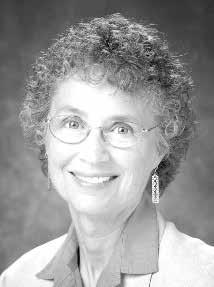
I had finished shopping before Dick, and I waited for him near our car.
There was one other car in the parking lot, next to ours, where another woman stood, waiting for her husband.
I said, “Isn’t this a lovely spot?”
She looked at our surroundings with distaste.
“Better than the place we were in last week.”
“Where were you last week?”
“Arizona. Nothing there but sand and rocks.”
I asked where she was from.
“Maryland,” she replied, looking around once more with disgust, “where it’s nice and flat, and we
don’t have these awful hills to climb all the time.”
I didn’t say anything, but I sure was thinking: “If you want every place to be like Maryland, why don’t you stay in Maryland and leave the rest of the country to people who appreciate it?” Her husband’s arrival saved us from further conversation.
Silly me, thinking that people travel to experience places that are different from home.
When we were younger and before Dick took sick, we traveled once or twice a year.
Our method was to combine two types of vacations into a two-week visit.
For the first week, we signed up for a hike. On a guided walking tour, you might not see many places, but you see them slowly and fully. Local guides love the place and can teach you a lot about it.
For the second week, we rented a car and became tourists. With an AAA guide book and brochures we found in motels, we saw more places, but not in such depth as on a hike.
And, with this method, a few years after our sojourn in Tennessee and my conversation with that unappreciative traveler, we found ourselves in Arizona where she had seen “nothing but sand and rocks.”
During our hiking week, we walked in the Sonoran desert. We saw sand and rocks, yes, but also
saguaro cactus, the tall thin cactus with arms that you see in cowboy movies. We watched cactus wrens that build nests in the saguaro. We examined red spotted toads, a hairy tarantula, and a tiny rattlesnake curled under a rock. We identified several kinds of butterflies and many kinds of birds. We studied pictographs made by ancient people. We enjoyed the multi-colored desert sunset, and explored the sculptured rock formations of the Chiracahua mountains.
After the hike, we rented a car at Tucson, drove north, and glimpsed the mystical red rock formations of Sedona. We drove along the south rim of the Grand Canyon, toured Hoover Dam, and visited Lake Havasu City, the final resting place of London Bridge, which was dismantled piece by piece and reconstructed in the Arizona desert.
To us, it was a new world — fascinating, magical, enchanting, and the desert was a little scary. It wasn’t at all like the Massachusetts we had left behind. And that, of course, was the point.
St. Augustine wrote, “The world is a book. Those who do not travel have read only one page.” That lady from Maryland shows that you can lead a person to a book, but you can’t make her read it. Life is so much more fascinating for those who do. Contact jlindsay@tidewater.net




By Sharon oliver ContriButing Writer
REGION – Train buffs, also known as train enthusiasts, take their love for all things locomotives very seriously. Fortunately, for residents and those visiting the state, this beloved pastime can be enjoyed here in various ways. After all, it is a multi-million-dollar industry with many clubs and organizations located throughout the world.
Train-themed restaurants
Experience some good old-fashioned vintage ambiance by dining inside an old passenger train coach at Bernie’s Dining Depot in Chicopee. Offering a caboose-sized menu of entrees, customers can select items like the Conductor’s Cut which is a full two ribs and at least four inches of prime rib.
The Steaming Tender Restaurant is tucked inside the restored Palmer Union Train Station and specifically caters to train buffs who like to observe busy train traffic. Rail fans from around the world travel to this uniquely designed train-themed eatery and on-site museum which features an 1890 Wells Fargo hotel-style stagecoach. Palmer is also known as “the town of seven railroads.”
Train rides and museums
Nothing beats the pure joy of a train ride like an actual train ride. Passengers can sit back and relax on a scenic excursion with the Cape Cod Central Railroad. Guests are treated to a narrated history of cranberry harvesting and the canal while riding past salt marshes and cranberry bogs. How about passing the time away with a Sunday brunch or five-course sunset gourmet dinner? The Christmas sea-
son is another special time with dancing chefs and waiters who perform as carols play for all to hear.
Thequeen333 shared her Cape Cod Central rail experience on TripAdvisor:
“My husband and I enjoyed the great ride and fabulous dinner. The food is outstanding. I must admit this was my first train ride and it was the best. This excursion takes three hours and is well worth the money.”
VictoriasL5030DF added:
“A nice thing to do while on vacation! We love railroads and this certainly was a nice time! Absolutely a good time for those kids and adults who like trains!”
Get onboard the Hoosac Valley Train Ride for a 10-mile journey through the northern region of Berkshire County and learn about the area’s industrial history and block stations. These stations were critical in the era of telegraph and single-track railroad lines. While you’re there, also check out the Lenox Station Museum with its collection of historic railroad equipment.
The Lowell Streetcar line provides free rides on antique streetcars. Visitors can also check out the displays, interactive exhibits, and hands-on activities at the National Streetcar Museum at Lowell.
Carver’s signature attraction is its Edaville Family Theme Park where enthusiasts can climb aboard for a 20-minute ride across the 11-acre Thomas Land. Any time is a good time to visit for a ride through cranberry logs. However, there are some special occasions to keep in mind for the calendar such as their Mother’s Day Tea party, giving moms a chance to kick back for one hour while sipping a cup of tea and munching on beignets and cream puffs. Dads won’t be left out either for Father’s Day. They get treated with a bottle of root beer and a cup of
vanilla ice cream. Later in the year, families can come back for the Festival of Lights and Polar Express.
Headquartered in Monson is America’s largest railroad-themed trade show, the Railroad Hobby Show. Sponsored by the Amherst Railway Society, each year people will have the opportunity to attend clinics, learn railroad history, see model railroads and trains, and much, much more. Even the Newbury-Rockport MBTA commuter line is a fantastic scenic trip to take since it involves cruising along miles of breathtakingly beautiful coastline and passing by picture-perfect New England homes. Train enthusiast or not, Massachusetts train-themed outings are sure to make a fan out of anyone.









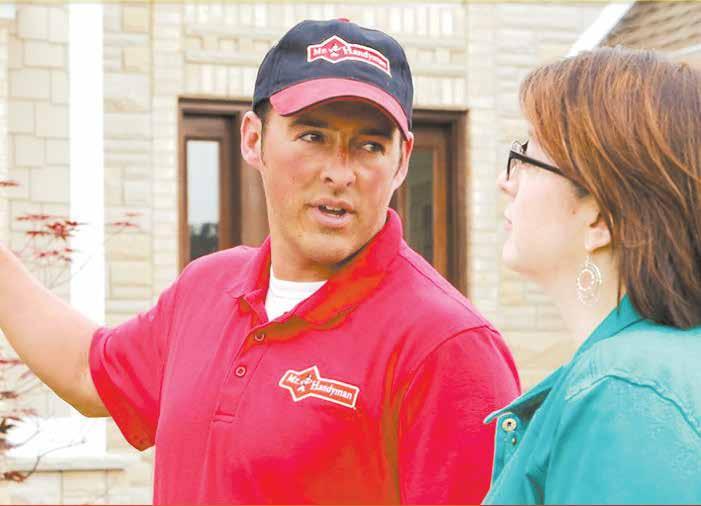
By Sharon oliver ContriButing Writer
REGION – Childhood activities such as bike riding and roller-skating are often carried into adulthood and the world can thank Medfield native James Plimpton for the latter. Although Plimpton patented roller skates in 1863, Framingham native Everett H. Barney contributed also and made a fortune by inventing clampon roller skates that were attached to shoes. And roller-skating rinks have come a long way after almost being banned over a hundred years ago.
Controversial early days
In 1884, an editorial in the Lowell Sun set it sights on the Gorham Street Lowell Skating Rink, claiming it was “the cause of more and worse immorality in the city” and that the city’s theaters were a “Sunday school” compared to roller skating rinks. The writer pondered:
“Does it improve a young girl’s modesty or morals to fall in a heap on a skating rink floor, in the gaze of hundreds, with perhaps her feet in the air and her clothes tossed over her head? Is it good for her proper training to see other females in such plight?”
The fad did crash on the Cape around 1890. In 1925, Barnstable made it illegal to roller skate on roadways except while crossing a street on a crosswalk. By the 1970s, skating rinks’ popularity increased again thanks in large part to disco music.
While there are still dozens of rinks operating within the state, at least 68 of them closed over the years. Dorchester’s Chez Vous was able to

remain open during and after the COVID-19 pandemic by swerving into serving soul food. Open since 1933, Chez Vous has long been a hub for the Black community and a popular venue for birthday parties and other celebrations. Throughout the decades, other community linchpins have not been so lucky.
Marshfield Family Skateland (Marshfield) opened in 1959 and also played host to benefits, skating parties, hockey games and 24-hour skatea-thon competitions like “Round the Clock” where skaters tried to keep rolling for 24 hours with only a 10-minute break every four hours.
Another popular rink for 40 years was Skylite Roller Skating Center in Worcester. It permanently closed its doors after temporarily shutting down due to the pandemic in 2020. One user commented on Facebook:


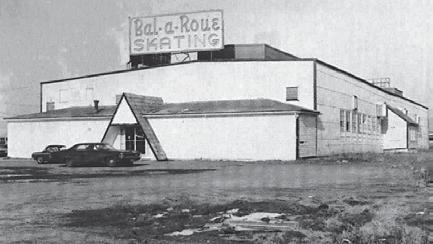

“Dear Skylite, thank you for giving me the best memories as a child in the early 80s. It was always fun banging into the light up wall lol. Richie! Twirling in the center under the disco ball. Requesting songs at the DJ booth, the yummy snack foods... Having my kids’ birthday parties there later in my life. You’ll be missed! Thank you and the very best well wishes to you and yours!”
The historic Bal-a-Roue in Medford, which last about 50 years, into the 1980s, will always be remembered for the live Hammond B-3 organ music and speed skating team. Some may even recall the barrels of burning wood to help keep the place warm during the winter. Established in the 1970s, Good Times Roller Skating Center in Amesbury is now occupied by a company called Valiant Industries, Inc. The Roller Palace in Beverly hosted a private gathering called “The Fi-
nal Goodbye” in 2016 to celebrate the community and included a raffle with proceeds benefiting a charity. The owners held a final skate at the rink in 2018.
Haverhill’s Skateland first opened in 1951 as Carbone’s Skateland and changed hands several times over the years. George and Mary Pyche, who owned six skating rinks, would buy the business in 1992. Skateland remained in operation until 2021 and it was announced in 2022 that the site would be transformed into The Beck, a complex consisting of 290 residential units, 3.2 acres of public parks, playgrounds, trails and nearly 6800 square feet of prime retail space.

By Sharon oliver ContriButing Writer
REGION – There was a time when the only thing that mattered or was worth reading first in newspapers were the comic strips, or as some referred to them, the funnies. Long before memes, GIFs, or even political illustrations found life on social media, cartoonists gained popularity through newspapers and comic books. Some of whom were born or worked in the state of Massachusetts.
William J. C. Armend III
William J. C. Armend III is an American cartoonist and native son of Northampton. After getting fired for being unqualified in the animation business, Armend signed on with Universal Press Syndicate and his comic strip “FoxTrot” made its debut in April 1988. The strip centers around the lives of Roger and Andrea (Andy) Fox and their children, Peter, Paige, and Jason. During the 1990s, the character Jason Fox was licensed to Wolfram Research as a product mascot for its mathematical software package.
Shawn McManus
Born in Brookline, Shawn McManus has worked for DC Comics and other companies for over 30 years. Aside from illustrating comic book covers, McManus also worked on the television series “Tales from the Crypt” and the animated series “Dinosaucers.” Some of the notable comics he has worked on include Batman, Aquaman, and Wolverine.
Al Capp
Despite his later controversies, Alfred Gerald Caplin, better known as Al Capp, was a renowned cartoonist best
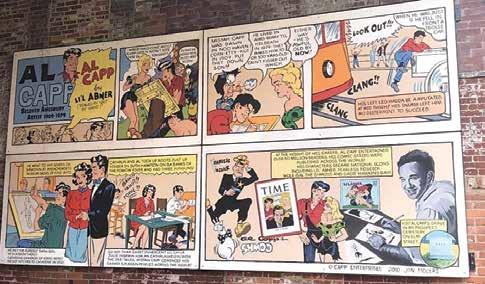
known for the classic satirical comic strip “Li’l Abner.” Capp created the cartoon in 1934 and it ran in newspapers across the U.S. and internationally for decades. The hillbilly burlesque about the Yokum family and other simple-minded townsfolk in the fictional community of Dogpatch was made into a musical comedy film in 1959.
Although Capp was born in New Haven, Connecticut, he moved to Boston where he met his wife in art class and worked on his “Li’l Abner” drawings from a studio space overlooking Amesbury’s Market Square. The couple lived with her parents in Amesbury until he decided to relocate to New York to further his career in 1933. When Capp was nine years old, he was run down by a trolley car and had his left leg amputated above the knee. The tragedy helped shape his cynical worldview, which came through in his comics and separated him from other cartoonists. In 2013, a group of talented locals painted a mural in the Amesbury Market Square
archway honoring Capp with depictions of his characters and the humorist’s life retold via text bubbles.
Dr. Seuss
Perhaps the most famous of
them all is beloved children’s author and cartoonist Theodor Geisel, better known as Dr. Seuss. Born and raised in Springfield, Seuss started out in the world of advertising, and drew political cartoons during World War II. Generations of adults are familiar with his illustrations and books: “The Cat in the Hat” (1957), “How the Grinch Stole Christmas” (1957), and “Green Eggs and Ham” (1960). Many of them were turned into animation and movies several times over.
William Ellsworth Spaulding, then director of the education division at Houghton Mifflin, tasked Seuss with penning a book using only 250 words that first-graders could easily recognize and the rest, as they say, is history. Although Dr. Seuss spent a lifetime writing and illustrating children’s books, he had no children of his own and once said, “You have ‘em; I’ll entertain ‘em.” The Dr. Seuss Museum in Springfield is a popular destination with tourists and locals.
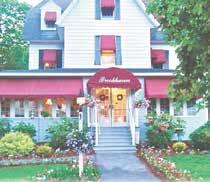
to
Someone has said that our lives should resemble channels, not reservoirs. A reservoir stores water, a channel distributes it. God wants us to be channels of blessing to others. Are you?
Honor God with your possessions, and with the first fruits of all your increase. ~ Proverbs 3:9 ~ Billy Graham Hope for Each Day






By Colin MCCanDleSS ContriButing Writer
BOSTON – Despite owning a company that now rakes in billions of dollars in annual revenues, Jim Koch, the 75-year-old founder of the Boston Beer Company, aka Sam Adams, is a revolutionary figure in the craft beer industry.
Koch experimented in the craft beer scene before it was even a blip on a Portland hipster’s radar and is often credited with launching the craft beer movement in America. And his bet has paid off big-time: his net worth is currently estimated at $1.4 billion.
Before the craft beer boom
When he left a lucrative career as a management consultant with Boston Consulting Group to start the brewery it was the mid-1980s, back when craft beer barely existed, and you couldn’t find a bourbon barrel coffee stout to save your life.

Samuel Adams Boston Lager won out against 100 other breweries to win the title of “Best Beer in America” during 1985, the year it was introduced to the market.
The American beer landscape looked vastly different back then and choices were severely limited. Most quality beers were imports and the draft taps featured a who’s who of major domestics.
happened to be a brewer with a family brewing tradition.
Launching the brewery
Now that he had created a beer that met his high standards, the next step was funding his fledgling beer enterprise. No bank in Boston would lend to this unknown homebrewer, so Koch borrowed money from friends and family to get the operation off the ground.
Samuel Adams made its inaugural appearance in Boston establishments on April 15, 1985, debuting at around 35 bars and restaurants, primarily situated in the Back Bay and downtown. Koch toted the beer himself into area bars. He would later reflect in an interview with the publication Tap Trail that he “was basically a beer-delivery guy coming into the back of a restaurant and getting treated like crap.” However, the lager’s fresh taste and rich flavor drew rave reviews. Distribution quickly spread across Massachusetts and into Connecticut and by year’s end Koch had sold 500 barrels of his new frothy libation.
AFFORDABLE HOUSING
Bigelow Village – Rutland
RETIREMENT LIVING
Congregational Retirement –Melrose
REST HOMES
Goddard Homestead –Worcester
ASSISTED LIVING FACILITIES
Brookhaven Assisted Care –West Brookfield
Goddard Homestead –Worcester
Heywood Wakefield Commons –Gardner
SUBSIDIZED HOUSING
Colony Retirement – Worcester
Green Hill Towers – Worcester
Sherwood Village – Natick
*Your phone number is required to process your request. It will be used only in regard to the properties that you have marked.
Please contact me regarding the housing opportunities I’ve checked off below: SEND COMPLETED FORM TO:
In a 2023 interview with Forbes magazine, Koch reflected on those formative years before anyone was aware that craft beer existed. “In the beginning, our competition was ignorance and apathy,” Koch said. “People didn’t know about good beer and didn’t care and were drinking fizzy yellow beer. As an industry, we all helped educate [the public]. And we all grew.”
Koch, a Cincinnati native who comes from a family of brewmasters dating back to his great-great-grandfather Louis Koch, firmly believed he could create a worthy lager that could compete with the big boys. His discovery of his great-great grandfather’s recipe for Louis Koch Lager in the attic of his family’s Cincinnati home would eventually transform the beer game. He tinkered and tested and ultimately found a winner.
While you hear plenty of anecdotes about corporate behemoths that started out in the founder’s garage, the inception of Boston Beer Company happened in Koch’s kitchen, where he concocted his first batch of Samuel Adams Boston Lager in 1984, based on that old family recipe. The name choice was no accident. Samuel Adams was a Founding Father and patriot of the American Revolution who
The accolades came early, with his Boston Lager winning “Best Beer in America” at the Great American Beer Festival in 1985 during its first year of existence. He beat out more than 100 other breweries vying for the coveted title, both large and small. It was evident from the jump that Koch knew and appreciated the art of beermaking.
Growth and expansion
Koch lacked the capital and investors to build out a massive brewery, so he solved the problem initially by contracting out the beermaking to a century-old brewery in Pennsylvania. In 1989, he opened the Samuel Adams Boston Brewery at the former site of the historic German Haffenreffer Brewery in the Jamaica Plain neighborhood of Boston.
And remember the next time you enjoy sipping that decadent bourbon barrel coffee stout, that Boston Beer Company was the first brewer to age beer in bourbon barrels, beginning in the early 90s. And November 21, 1995, marked a watershed moment when Samuel Adams went public on the New York Stock Exchange with the NYSE symbol SAM.
In homage to his father and the Koch family brewing tradition, in 1997 he bought the Cincinnati brewery Hudepohl-Schoenling, the spot where his dad once apprenticed as a brewmaster in the 1940s.

Never one to rest on his laurels, the year 1997 also saw Koch expand outside the beer realm with the introduction of Hardcore Cider. It would later be replaced by Angry Orchard in 2012 due to slumping sales. Twisted Tea Hard Iced Tea hit the market in 2001 as the company continued
growing its product line.
He refurbished and expanded the Cincinnati Samuel Adams Brewery in 2005. Koch later purchased a worldclass brewery built by Schaefer Brewery in the Lehigh Valley area of Pennsylvania in 2008. In 2016, Boston Beer entered the hard seltzer market with Truly Spiked and Sparkling.
He brought the Samuel Adams Cincinnati Taproom to his hometown in 2018, which overlooks the Cincinnati brewery and sports a mural toasting the city’s rich brewing heritage, of which Koch’s family is a part.
Later in 2020, in a fitting nod to his revolutionary beginnings, Boston Beer opened the Samuel Adams Boston Taproom adjacent to the Samuel Adams’ statue in downtown Boston. Always one to push the boundaries, the company established Truly LA, America’s first ever seltzery, in 2022 in response to the surge in popularity of hard seltzer beverages.
Funding the next generation of craft beer businesses
Koch never forgot his roots or the struggles he faced in overcoming the financial hurdles that stood in the way of his own craft brewing ambitions. With that in mind, in 2008 he established a philanthropic initiative called Brewing the American Dream that dis-



burses loans and provides mentorship to help make that path a little smoother for the next generation of craft beer entrepreneurs.
In August 2023, the program announced that it had surpassed $100 million in funding to support small food and beverage businesses nationwide. According to its website, it has also created and retained more than 11,000 jobs through the program. Koch conceded in that same 2023 Forbes interview that it might appear like he is assisting his potential competitors, but he still views himself as a craft brewer in a market dominated by titans such as Anheuser-Busch InBev and Molson Coors. “We’re all trying to compete against the big guys,” he stated.
The same year that Brewing the American Dream launched, Boston Beer Company started a hops sharing program to help other American craft brewers suffering a setback from a worldwide hops shortage.
Craft beer is still alive and well
According to the Brewers Association, the number of operating craft breweries in the U.S. increased to 9,552 in 2022, an all-time high. Coming in at number two on the Brewers Association’s list of Top 50 Craft Brewing
Companies in terms of production? None other than Boston Beer. Despite being near the top in overall craft beer production, the company still only claimed one percent of the overall market share in the U.S. beer industry in 2023.
When asked in his Tap Trail interview about the role he feels Sam Adams played in growing the popularity of craft beer, Koch replied, “I can’t tell you it happened quickly. It really took 20-something years. When I started, even the term “craft beer” didn’t exist. We were called micros, and it was this radical idea.”
But as more and more people became educated about quality, flavorful beer, and the ingredients that go into making it, the paradigm ever so gradually began to shift. Attitudes changed.
As Koch would later add, “Once people started drinking Sam Adams — or now, all the craft beers out there — you can’t go back.”
Although the craft beer market is now thriving, Koch told Tap Trail that the increase in competition has had a positive influence on him and motivated Boston Beer to be better and to “continue to raise the quality level and continue to innovate and make new beers.”
We can all raise a glass and toast to that sentiment.

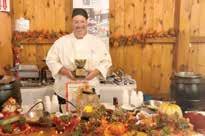





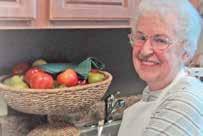
• Daily social activities & programs
• Three chef-prepared meals daily
• Assistance with personal care needs
• Medication reminders
• Laundry & housekeeping services
• Safety checks
• Dedicated, caring staff 24/7

For more information or to schedule a tour, call Kristy Livingston at (978) 632-8292 or email info@hwcommons.com

SOUTH KINGSTOWN, RI – South Shore Village & Golf Club in beautiful South Kingstown, Rhode Island has been open since 2016. The construction of 55-plus homes has been developed in phases.
Over 200 houses have been built, and another 80 or so are still
to be built. By the end of construction, a total of 303 houses will be completed on 286 acres with a golf course. It offers a community center with pools and a fitness center. The houses are detached two-bedroom, two-bath condos with two-car ga-
South Shore Village & Golf Club in South Kingstown, Rhode Island features detached twobedroom, twobath condos with two-car garages and full basements.
rages and full basements. And only 10 minutes from the beach! All the benefits of Cape Cod without all the Cape traffic. Plus, no bidding wars and transparent pricing.
Please visit their website at www.southshorevillageri.com.
